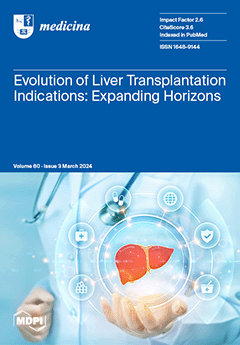Background and Objectives:
Enterococcus faecalis (E. faecalis) is a primary pathogen responsible for dental abscesses, which cause inflammation and pain when trapped between the crown and soft tissues of an erupted tooth. Therefore, this study aims to use specific phages as an alternative method instead of classical treatments based on antibiotics to destroy multidrug-resistant
E. faecalis bacteria for treating dental issues.
Materials and Methods: In the current study, twenty-five bacterial isolates were obtained from infected dental specimens; only five had the ability to grow on bile esculin agar, and among these five, only two were described to be extensive multidrug-resistant isolates.
Results: Two bacterial isolates,
Enterococcus faecalis A.R.A.01 [ON797462.1] and
Enterococcus faecalis A.R.A.02, were identified biochemically and through 16S rDNA, which were used as hosts for isolating specific phages. Two isolated phages were characterized through TEM imaging, which indicated that
E. faecalis_phage-01 had a long and flexible tail, belonging to the family
Siphoviridae, while
E.
faecalis_phage-02 had a contractile tail, belonging to the family
Myoviridae. Genetically, two phages were identified through the PCR amplification and sequencing of the RNA ligase of
Enterococcus phage vB_EfaS_HEf13, through which our phages shared 97.2% similarity with
Enterococcus phage vB-EfaS-HEf13 based on BLAST analysis. Furthermore, through in silico analysis and annotations of the two phages’ genomes, it was determined that a total of 69 open reading frames (ORFs) were found to be involved in various functions related to integration excision, replication recombination, repair, stability, and defense. In phage optimization, the two isolated phages exhibited a high specific host range with
Enterococcus faecalis among six different bacterial hosts, where
E. faecalis_phage-01 had a latent period of 30 min with 115.76 PFU/mL, while
E.
faecalis_phage-02 had a latent period of 25 min with 80.6 PFU/mL. They were also characterized with stability at wide ranges of pH (4–11) and temperature (10–60 °C), with a low cytotoxic effect on the oral epithelial cell line at different concentrations (1000–31.25 PFU/mL).
Conclusions: The findings highlight the promise of phage therapy in dental medicine, offering a novel approach to combating antibiotic resistance and enhancing patient outcomes. Further research and clinical trials will be essential to fully understand the therapeutic potential and safety profile of these bacteriophages in human populations.
Full article






